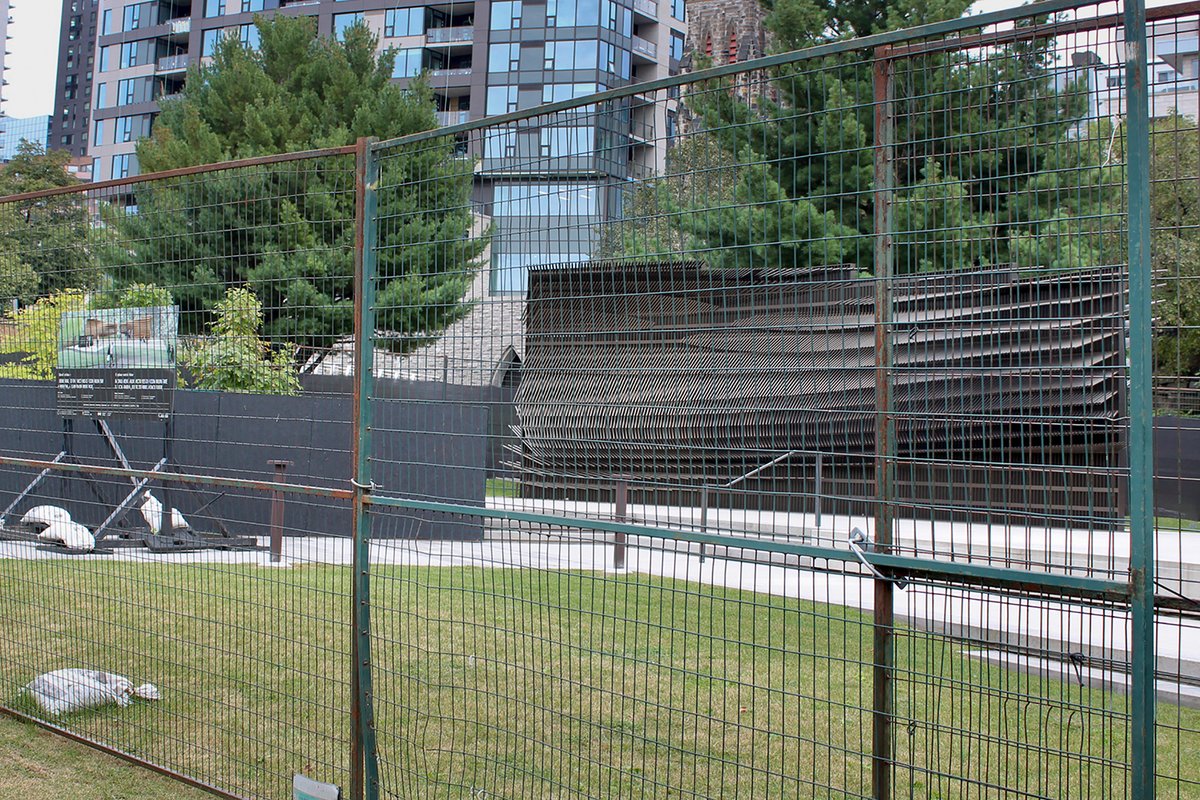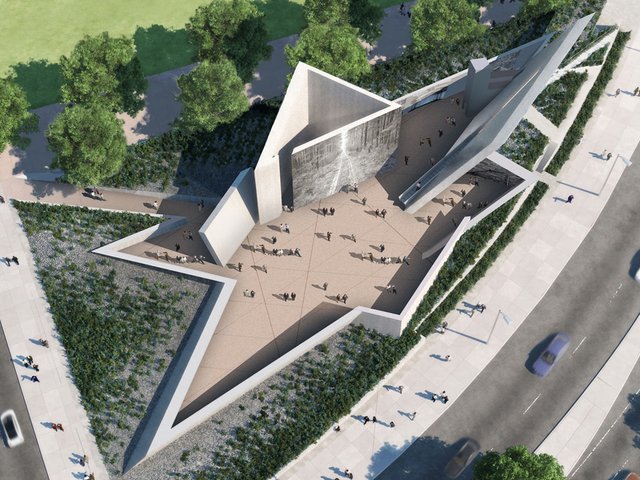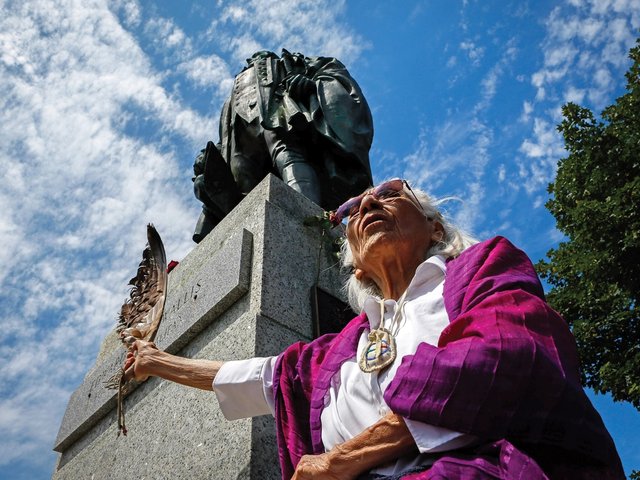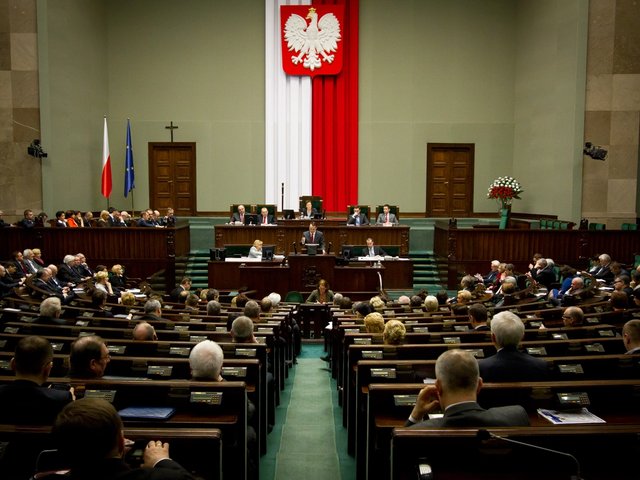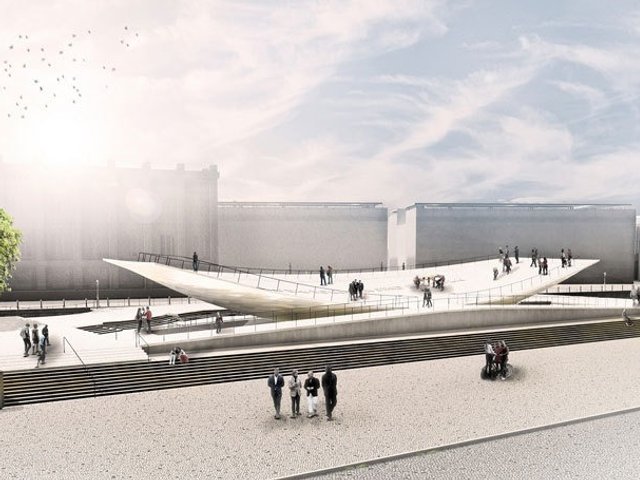A year after its unveiling was postponed indefinitely, Canada’s most controversial monument remains fenced off and undedicated.
Officially named “Memorial to the Victims of Communism—Canada, a Land of Refuge”, the C$7.5m ($5.4m) public monument in downtown Ottawa was built by the federal government and intended to honour the victims of communist regimes who fled to Canada. Designed by the Toronto architecture firm Paul Raff Studio, it is composed of more than 4,000 bronze rods arranged on 365 slim posts. Each rod represents an hour of sunlight across an entire year, with a broken middle symbolising the winter solstice—the darkest day of the calendar.
In addition, there is a small “wall of memory” supposedly engraved with hundreds of names of alleged victims of communism submitted by the initial donors to the project. But this list was never vetted, and in 2021 the Canadian Broadcasting Corporation revealed that several people listed for commemoration were wartime fascist leaders, Nazi collaborators or suspected war criminals.
Nazi volunteer scandal
The monument was supposed to be dedicated on 2 November 2023, but officials with Canadian Heritage—the ministry responsible for its construction—postponed the unveiling in the wake of the Yaroslav Hunka scandal. (Hunka, a 99-year-old Ontario resident, had been honoured by the Canadian Parliament in September 2023 for fighting the Soviets in the Second World War; it was later discovered that the veteran had volunteered to fight alongside the Nazis in a Ukrainian SS unit.)
Heritage department officials subsequently decided to review the monument’s commemorative content. That review is ongoing, but Canadian Heritage would not elaborate what specifically is being investigated, other than to say that the government is working to ensure that the monument aligns with “Canadian values”.
What those values are is as nebulous as what constitutes a “victim of communism”, and the controversy surrounding the monument extends in all directions—from its location to its design, purpose and the history it tells. But the fact that it is costing roughly five times its original budget, and many years behind schedule, is of secondary concern when compared with its tacit endorsement of controversial pseudo-historical narratives.
A troubled history
The original project dates to 2007, when the Conservative politician Jason Kenney toured a private park in Toronto and saw the late Czech sculptor Josef Randa’s Crucified Again (1989), which commemorates victims of communist governments in the form of a tortured man crucified on a hammer and sickle. Determined to create a similar monument in Canada’s capital, Kenney coordinated with representatives of immigrant communities who had fled communist regimes to develop the project. Initially a non-partisan endeavour, the first group organised to develop the monument was eventually replaced in something of a hostile takeover by another organisation with much closer ties to the Conservative Party. This latter group, which became the registered charity Tribute to Liberty, has been responsible for the project ever since.
Much of the initial planning for the monument took place outside of normal channels and without sufficient public consultation. Between 2009 and 2014, the monument’s proposed location changed several times before the then-ruling Conservative Party decided to place it on a coveted parcel of land next to Canada’s Supreme Court. This was exceptionally controversial, as the land had been set aside for a future justice department building.
An initial design for the monument was chosen in 2014 and condemned almost immediately for its oppressiveness. Designed by Abstrakt Studio Architecture, it was composed of several “folded” rows of concrete covered in 100 million “memory squares” meant to honour 100 million victims of communism. Then-Chief Justice Beverley McLachlin told The Globe and Mail that the monument “could send the wrong message within the judicial precinct, unintentionally conveying a sense of bleakness and brutalism that is inconsistent with a space dedicated to the administration of justice”.
The monument’s location was not the only problem—“100 million victims of communism” is an invented figure rejected by mainstream historians. To attain this number, every Nazi killed by the Soviets in the war would have to be counted as a victim.
Scaled down and refocused
In response to the backlash, in 2015 the National Capital Commission—a federal government planning agency—scaled down the monument to make it seem less oppressive, and refocused its purpose to tell the stories of refugees from communist regimes.
A change in government that November resulted in the initial project being scrapped, and the process started all over again. The first change was the monument’s location—now moved to a less controversial site farther west. A new design competition was held, this time with greater public input. Paul Raff Studio’s design was chosen in 2017.
What was initially conceived as a comparatively small project of C$1.5m ($1.1m), drawn entirely from private donations, had by 2015 ballooned into a massive public endeavour with an estimated budget of more than C$5m ($3.6m). The monument was not just unpopular with the general public—a 2015 poll found that a majority of Canadians opposed it altogether—it was not even popular amongst members of communist-refugee diaspora communities. Yet despite a continued lack of interest, government funding kept increasing. The project’s final budget was estimated at C$7.5m in 2023; subsequent delays mean its final cost could be higher still.
Skeletons in the closet
Why two governments have committed millions of dollars to a controversial monument few Canadians seem to want is an important question with no clear answer. The project has practically taken on a life of its own. That said, there are an estimated eight million Canadians whose ancestors fled communist regimes, and their diaspora communities have coveted votes in battleground districts across the country.
But the question of what constitutes a “victim of communism” lies at the heart of the monument’s controversy. Initial qualifying parameters were never set. Much like Hunka, the fascists, collaborators and war criminals listed for possible commemoration were identified by their supporters as, first and foremost, freedom fighters opposed to communism.
The government has commissioned at least two historians to review the 553 names submitted for commemoration. Both suggested a comprehensive review to ensure against inadvertently honouring fascists, collaborators or suspected war criminals, but they cautioned that this would require significant additional resources and may not guarantee against inadvertently commemorating a disreputable person.
It is widely believed that hundreds (and perhaps thousands) of alleged war criminals and collaborators immigrated to Canada in the years following the Second World War. Like Hunka, most were Eastern Europeans who had volunteered to fight with the Nazis. Others served as auxiliary police or were collaborators or members of other fascist organisations. The Canadian government continues to grapple with the consequences of decisions it made 80 years ago, and the Memorial to the Victims of Communism is inextricably tied to this legacy.
Historical accuracy is key
“Commemorating the victims of communist regimes is legitimate and could be an ethical pursuit to reaffirm commitment to universal human rights,” Per Anders Rudling, a historian specialising in nationalism, tells The Art Newspaper. “At the same time, there are methodological problems of who to include in the victim category and how we define perpetrators.”
Rudling argues that it is incumbent on governments to do their homework before monuments are designed, let alone built. “Erecting monuments with historical inaccuracies literally cut in stone does not serve understanding or historical justice or honour Stalin’s victims,” he says. “The first and foremost commitment must be to historical accuracy. That must be the basis for all forms of reconciliation.”


